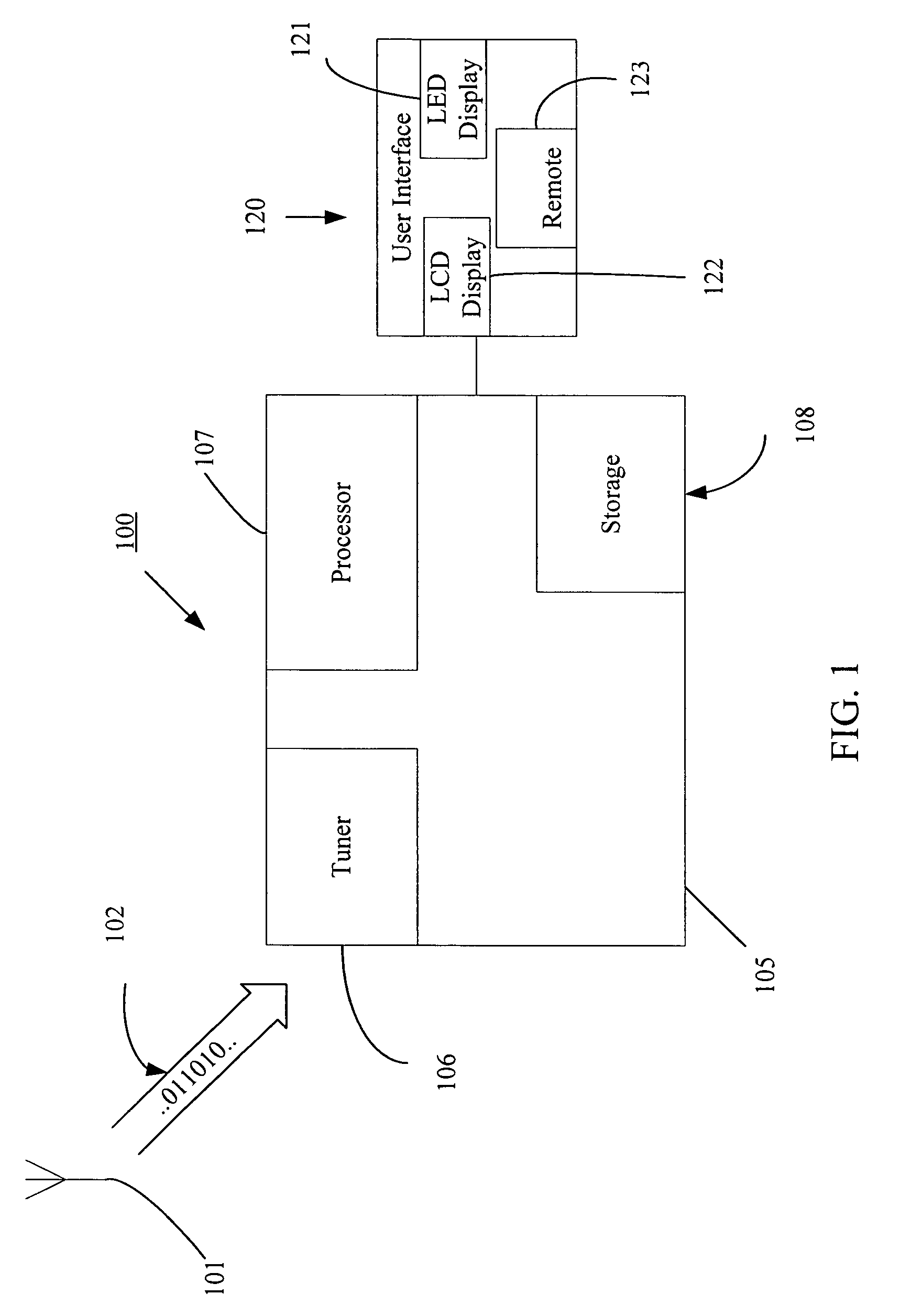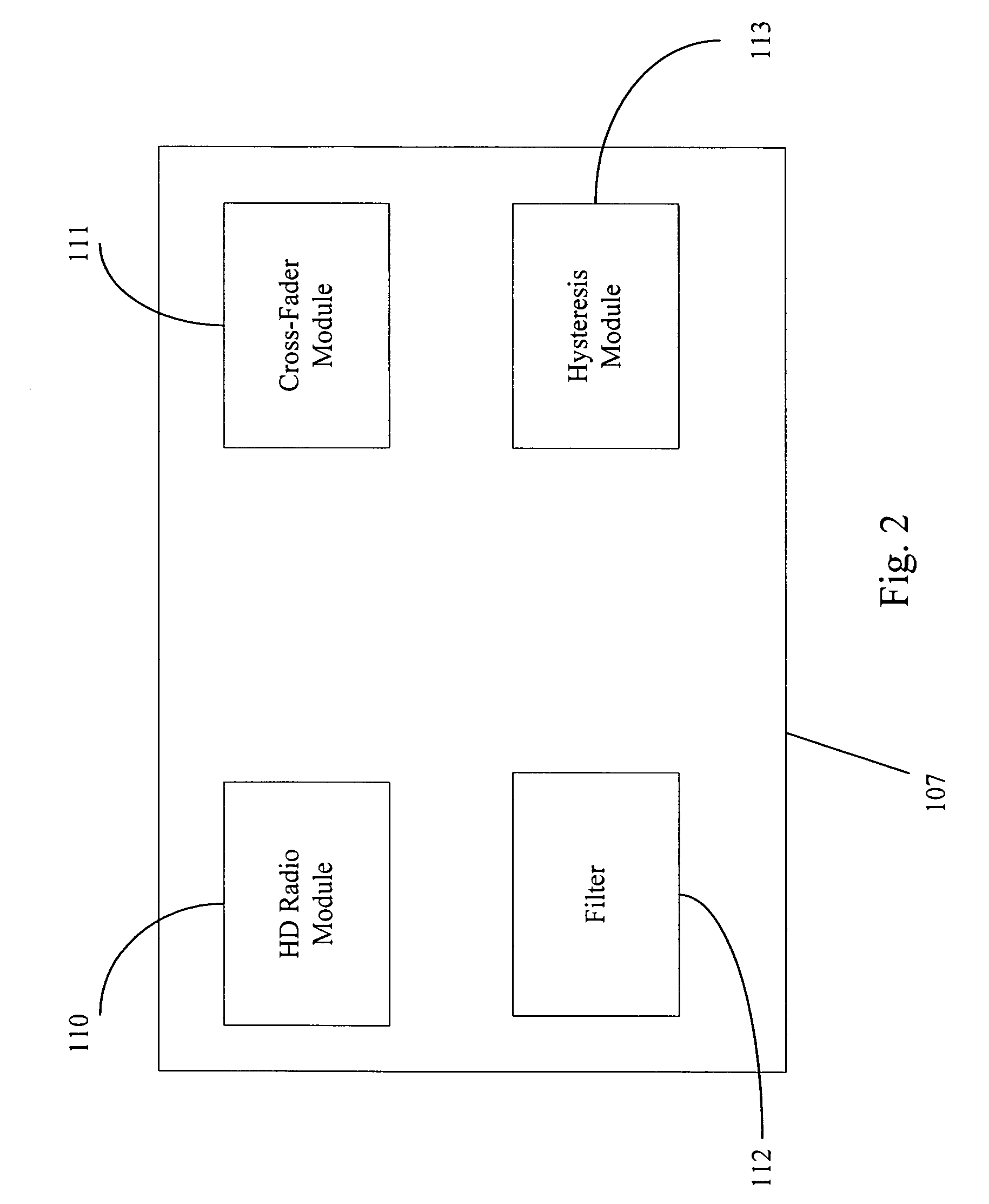System for high definition radio blending
a radio blending and high-definition technology, applied in the field of radio spectrum blending, can solve the problems of reducing the audio quality of all channels on a station, the limitation of hd radio is the blending process, and the fallback process may also be impeded by the use of multiple channels, so as to reduce the cross-fade rate and blend threshold, reduce the effect of loudness variations
- Summary
- Abstract
- Description
- Claims
- Application Information
AI Technical Summary
Benefits of technology
Problems solved by technology
Method used
Image
Examples
Embodiment Construction
[0016]A system that blends HD radio may provide improved sound quality perceived by the listener for AM and FM HD radio by adjusting the rate of blending from an analog signal to a digital signal and vice versa. The system may also provide improved sound quality for AM HD radio by increasing a filter bandwidth when an analog to digital blend occurs for an AM HD radio signal.
[0017]An HD radio AM in-band, on-channel (IBOC) system may support transmission of digital audio and auxiliary digital data within an existing AM channel allocation by placing groups of digitally modulated carrier signals, such as within and adjacent to an analog AM signal. Because digitally modulated carriers are inserted within the same spectrum occupied by the analog AM signal, the AM IBOC system may not be compatible with analog AM stereo signals. Corresponding sideband groups on either side of the carrier (i.e., upper primary and lower primary) may be independent in that only one of them may be needed for an...
PUM
 Login to View More
Login to View More Abstract
Description
Claims
Application Information
 Login to View More
Login to View More - R&D
- Intellectual Property
- Life Sciences
- Materials
- Tech Scout
- Unparalleled Data Quality
- Higher Quality Content
- 60% Fewer Hallucinations
Browse by: Latest US Patents, China's latest patents, Technical Efficacy Thesaurus, Application Domain, Technology Topic, Popular Technical Reports.
© 2025 PatSnap. All rights reserved.Legal|Privacy policy|Modern Slavery Act Transparency Statement|Sitemap|About US| Contact US: help@patsnap.com



